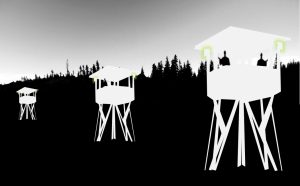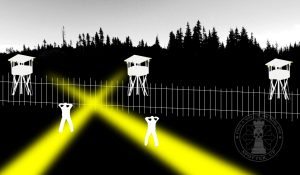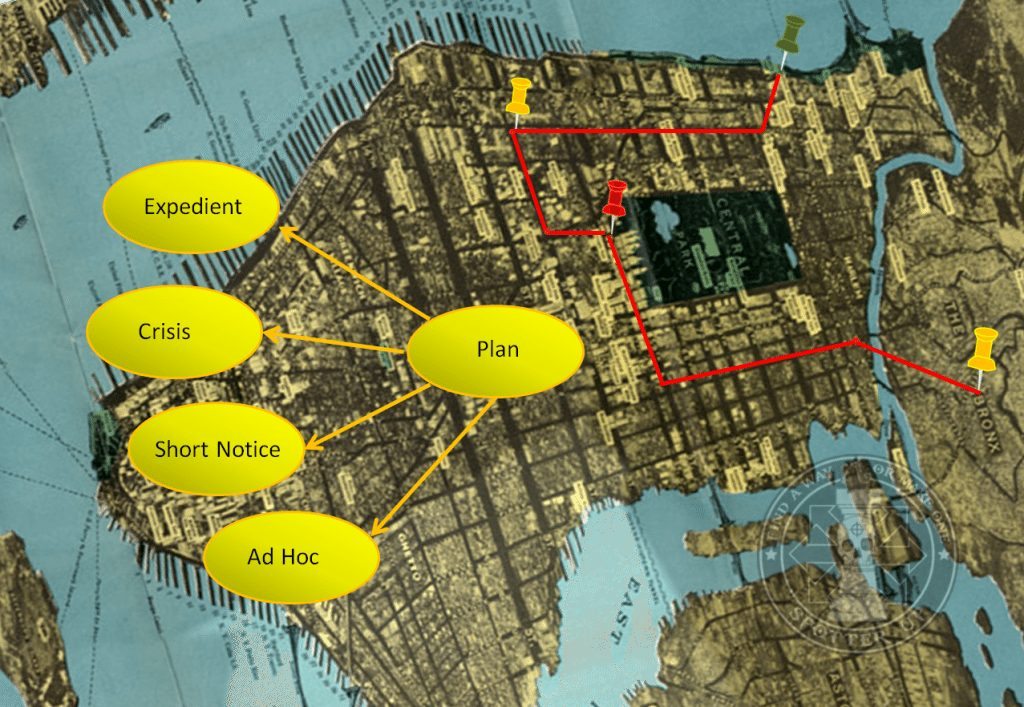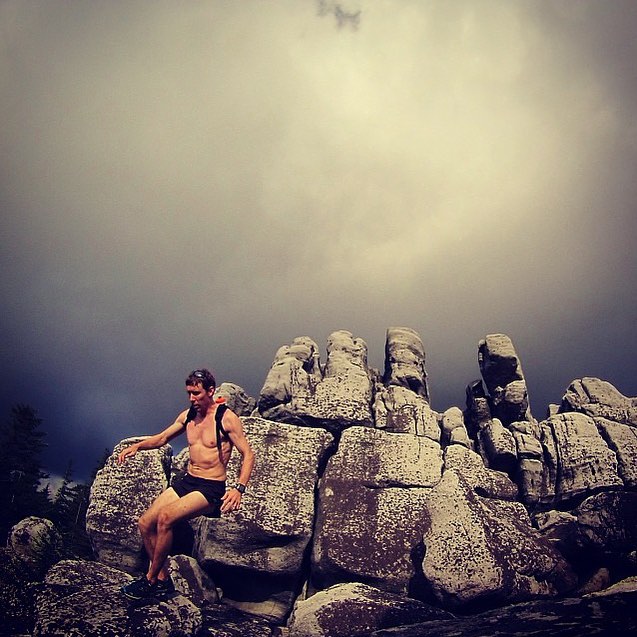What do you hope to achieve during a disaster? Try to clarify your intentions. Don’t just go into bug out mode by heading for the hills. Are you just going to run to a cave and hunker down with the thousands of other people with the same idea?
Being prepared is going to vary widely in scope and resources. If you start now, you’ll have better odds, and won’t have to scramble for resources that are quickly depleting at your neighborhood store.
Sometimes you may get a lot of warning, other times not so much. Being prepared will increase your odds of surviving. Media reports, radios and television can give you pre-warning information. Don’t sit and wait for help. Try to ‘think’ outside the box. Find ways to build up your home defenses and your offensive program of guns, ammo and tactics.
Now before the disaster comes, plan a “Bug Out” mission plan beforehand.
- Sum up your aim for the bug out and make it clear. “I will move my wife and kids 100k on foot to our safe-house, while staying off the roads, and relying solely on ourselves and with no help from strangers.”
- How much time are you devoting to the Bug Out (from its beginning to the time you arrive at your destination). Work this out with your family. How fast can a young child back-pack alongside you? Are you traveling with someone handicapped? Map at least two or three alternate routes and the travel time. Floods, looters, or mudslides can block your pathway out and you might be on foot. Another family with their own security could be blocking your path, and perhaps take your supplies. What happens in the case of martial law? Are you prepared for that? If security is set up along a wide expanse of your states roadways, you need to plan a way to avoid that.
- Did you practice beforehand to determine how long it took to pack your vehicle? Make sure to know how much time this takes. Take only the essentials. You don’t need ten pots and pans. But have an idea of what resources you will need to carry and if it is sufficient.
- You need a current, detailed city map with you. Don’t bother relying on GPS to help you navigate. It’s great if it works but it could be down until the provider gets it working again. If there are blocked roads from construction, flooding, clogging traffic or true dead ends, you’ll need alternate routes out of the city. Be sure to have the current year of the map on hand. Know how to navigate away from major thoroughfares, and parking lots where people are sure to congregate. Big Box stores like Walmart and Costco’s will likely be swarmed. Bring a good topographical map: You need something current that depicts water sources (lakes, streams, rivers) and roads other than interstates and freeways. Once you get out of your familiar zone, you will need this to locate areas you want to avoid or enter.
- If you have a place to go, don’t wait around, head straight for your destination. The further you can get away from populated areas, the better off you are. SUV’s, RV’s and tow-trailers are fine for carrying people and supplies on vacation. But try navigating around vehicles and corners while thousands of people are doing what you’re doing; fleeing. If you’re in open area in Wyoming or Utah this might be fine, but getting out of metropolitan areas like DC or New York is going to be tough.
- Conduct an Intelligence Preparation of the Battlefield (IPB) analysis: Some of the things you might consider are:
- Terrain analysis. A wildfire is something that might put you out for a while until local, state or government conducts post-disaster recovery. If the situation is dire, like the end of the world scenario, you need to be on your guard. Look at observation and fields of fire. Are you headed into territory that leaves you susceptible to attack?
- Cover and concealment. Make sure you have a place to rest, such as behind large pine trees and off-road, or an abandoned warehouse with good security fences.
- As you go along your path, keep thinking about obstacles that can arrive. A map will depict water sources like rivers but a map won’t tell you if the river is flooding the roadways.
- Are there enemies and what are their capabilities? Are you well armed for dealing with mayhem? If you have a good rifle and they have baseball bats, it’s likely you’re going to win. What if you have a bat and they have knives? What is their mission? Are they looters or something worse, such as gangs intent on rape, murder and mayhem? What are the recent activities in the area? Do the news stations tell you this and is it credible information based off what you know about your home turf?
- Plan for casualties. What if you lose important members of your security team? Will you be able to continue to your destination with 1-2 people less than you started out with?
- Will you need to withdraw to another location because you are under pressure? Do you have a contingency location mapped out? You should have had this already mapped out and then you must decide if you are doing and offensive or defensive measure to gain access to the location.
- Did you develop a Go/No Go Criteria for the Bug Out? At what point do you decide to cut your losses and run away?
Should you run away with nothing but the clothes on your back and a small pack or bug in? Well, that’s another article!
Once you hit the road, don’t think about going back for something you forgot, because you may never get back out. Fallen trees blocking roads, mudslides may stop you from getting where you need to go. If the disaster clears, you can back home, but if a disaster is serious would you really want to stop to look? Keep driving and don’t look back.
[jetpack_subscription_form]
Brought to you by the dudes at Spotter Up




